Pictures of the week: Latest on Palestine-Israel conflict
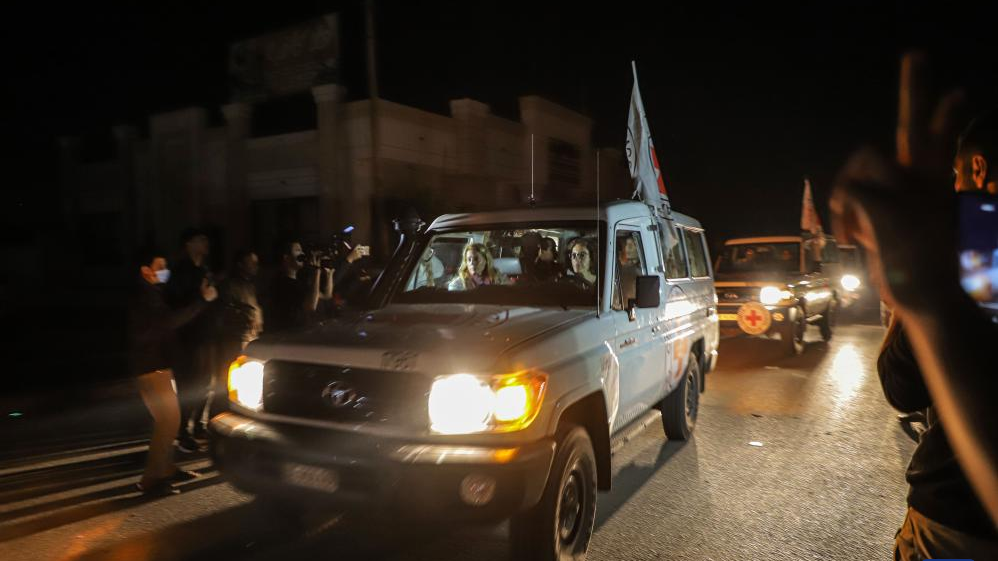
Vehicles belonging to the International Committee of the Red Cross transport released hostages toward the Rafah crossing in the southern Gaza Strip, November24, 2023. /Xinhua
Vehicles belonging to the International Committee of the Red Cross transport released hostages toward the Rafah crossing in the southern Gaza Strip, November24, 2023. /Xinhua
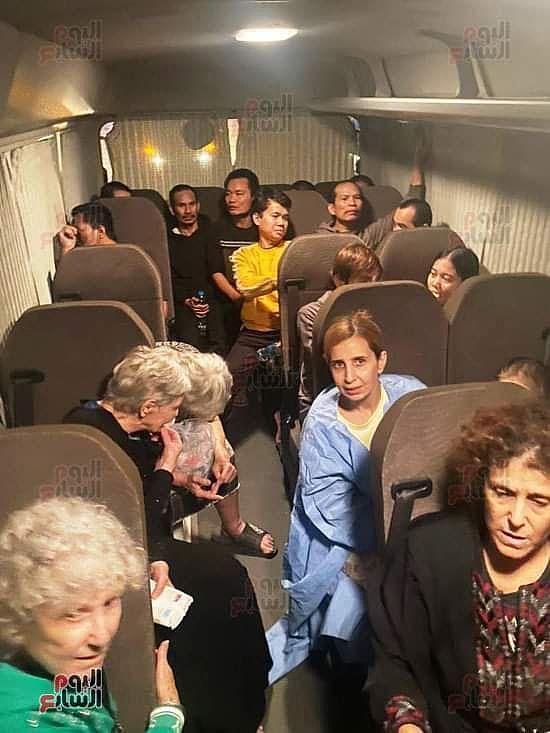
First group of hostages released by Hamas after cease fire. They were held by Hamas in Gaza since October 7, 2023. /CFP
First group of hostages released by Hamas after cease fire. They were held by Hamas in Gaza since October 7, 2023. /CFP
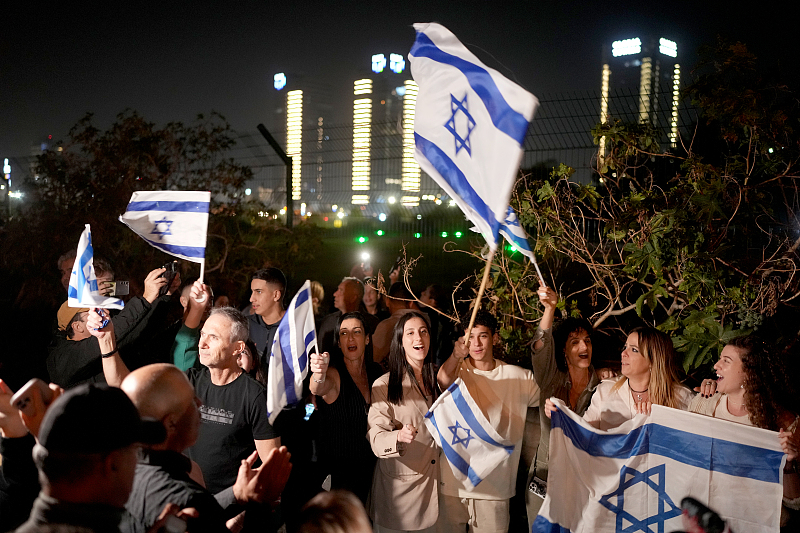
Family and friends gather as a helicopter arrives with hostages at a medical center in Petah Tikva, Israel, November 24, 2023. /CFP
Family and friends gather as a helicopter arrives with hostages at a medical center in Petah Tikva, Israel, November 24, 2023. /CFP
Israel received a list of hostages to be freed from Gaza on Saturday by Palestinian militant group Hamas, officials said, following the release of 24 hostages the previous day, the first of a planned four-day truce.
Israeli security officials were reviewing the list, the office of Prime Minister Benjamin Netanyahu said in a statement, after his government’s vow to work for the release of all hostages taken by Hamas in an attack on Israel on October 7.
The pause in the fighting was the first such break, with both sides saying hostilities would resume as soon as the truce ends.
The released hostages, including Israeli women and children and Thai farm workers, were transferred from Gaza and handed to Egyptian authorities at the Rafah border crossing, the organization said.
They were then taken to Israel for medical checks and reunions with relatives.
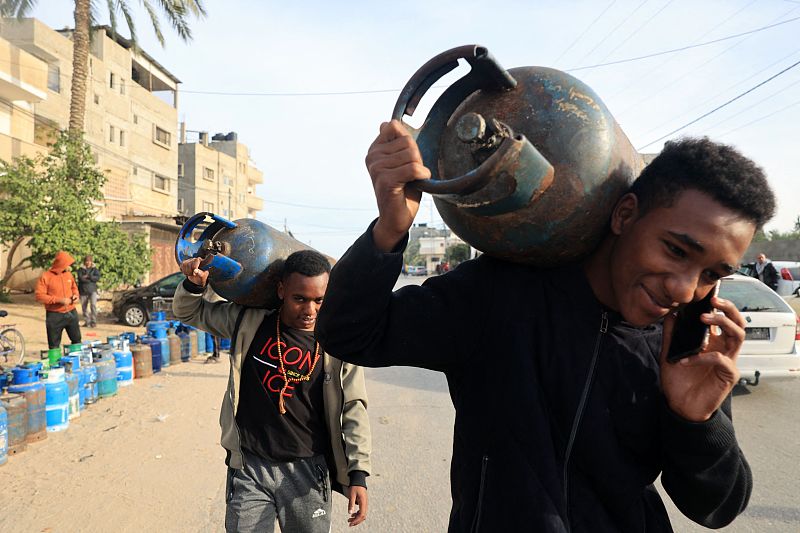
Men carry empty gas canisters to be filled with cooking gas from a tank that entered the Palestinian enclave via the Rafah crossing with Egypt, in Rafah in the southern Gaza Strip, November 25, 2023. /CFP
Men carry empty gas canisters to be filled with cooking gas from a tank that entered the Palestinian enclave via the Rafah crossing with Egypt, in Rafah in the southern Gaza Strip, November 25, 2023. /CFP
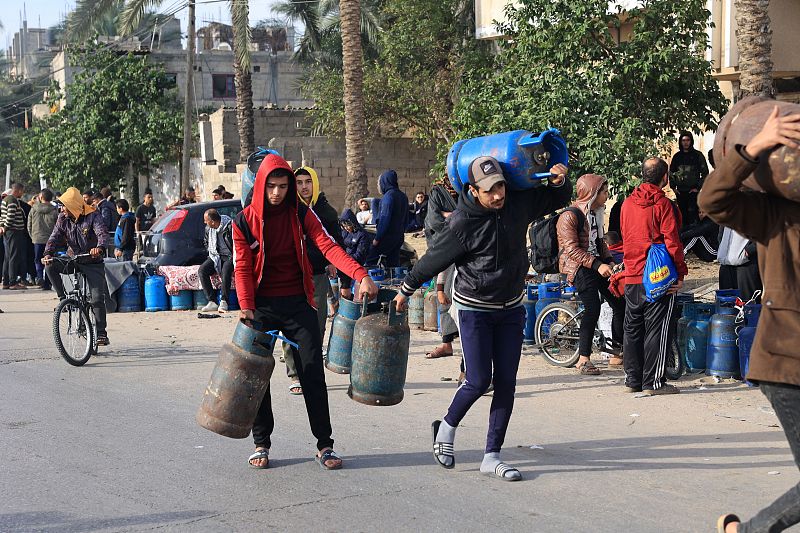
People carry emppty gas canisters to be filled with cooking gas from a tank that entered the Palestinian enclave via the Rafah crossing with Egypt, in Rafah in the southern Gaza Strip, November 25, 2023. /CFP
People carry emppty gas canisters to be filled with cooking gas from a tank that entered the Palestinian enclave via the Rafah crossing with Egypt, in Rafah in the southern Gaza Strip, November 25, 2023. /CFP
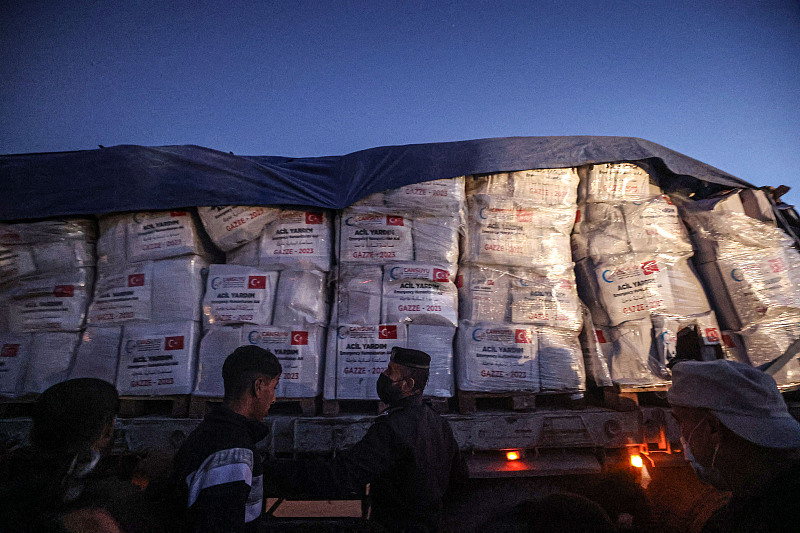
Trucks carrying humanitarian aid pass through Rafah border crossing after the humanitarian pause between the Israeli army and Palestinian group Hamas in Rafah, Gaza, November 24, 2023. /CFP
Trucks carrying humanitarian aid pass through Rafah border crossing after the humanitarian pause between the Israeli army and Palestinian group Hamas in Rafah, Gaza, November 24, 2023. /CFP
UN agencies voiced hope that the truce would allow for a ramping-up of aid and the first flows to northern Gaza in weeks as fresh hospital rescue efforts got under way.
Aid agencies have said they are aiming to deliver supplies to the northern part of the Palestinian enclave where hospitals have collapsed due to bombings and lack of fuel and where there are major concerns about dehydration and disease in a situation described as a siege within a siege.
But they say a more permanent ceasefire is required to deliver the mass amount of aid to address Gaza’s full needs, with nearly three-quarters of the population or some 1.7 million people displaced, thousands killed and many more, both dead and alive, thought to be trapped beneath the rubble.
“The north has suffered brutally so it’s one of our big priorities across UN agencies, irrespective of what the delivery is, is to get to the north,” said James Elder, a spokesperson for the UN children’s agency in Gaza.
The United Nations Children’s Fund (UNICEF) is aiming to get 30 trucks a day into Gaza during the truce and is prioritizing delivering water and blankets, he said, describing scenes of people drinking salty water and sleeping in their cars with smashed-out windows.
(With input from agencies)

